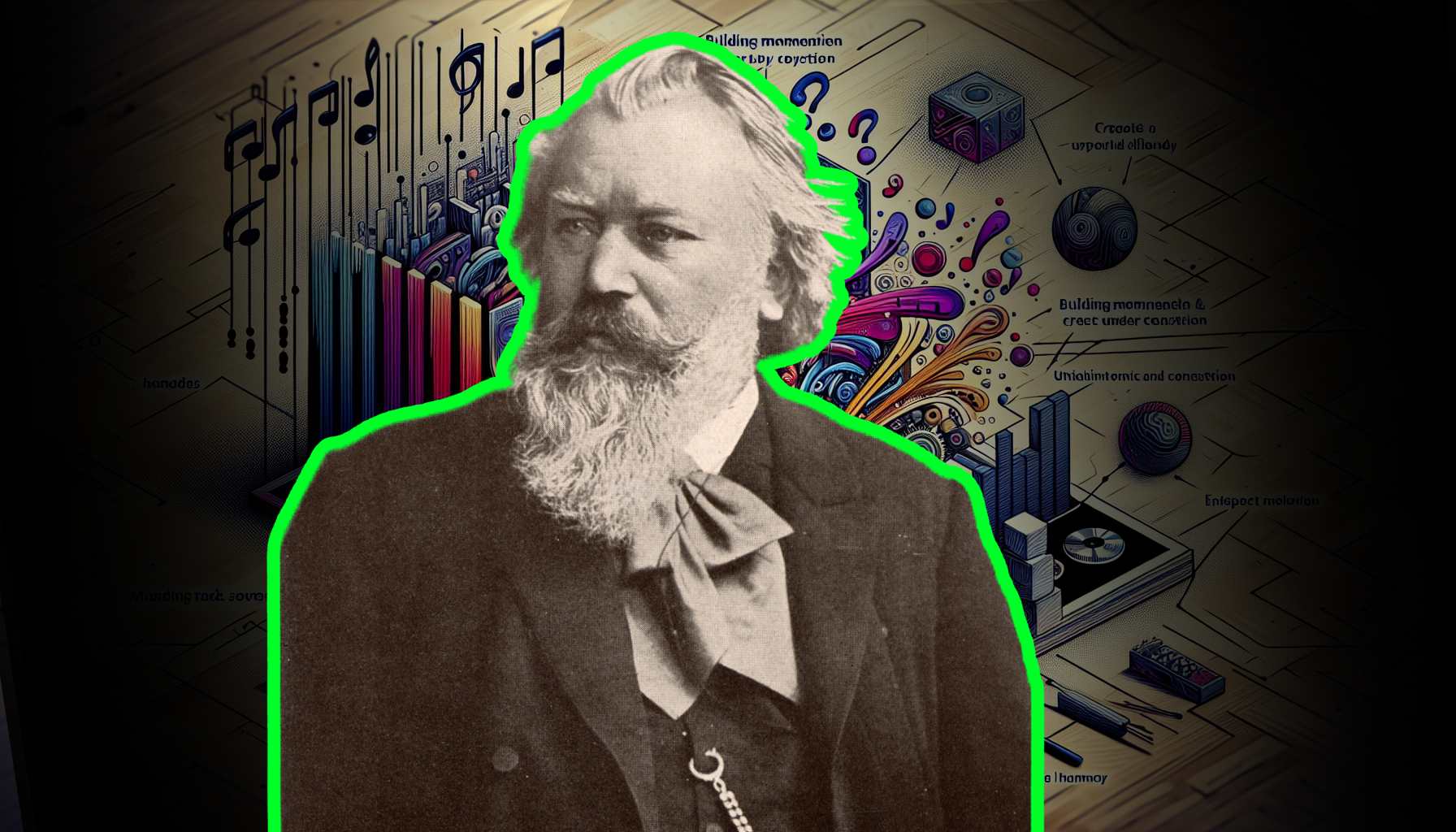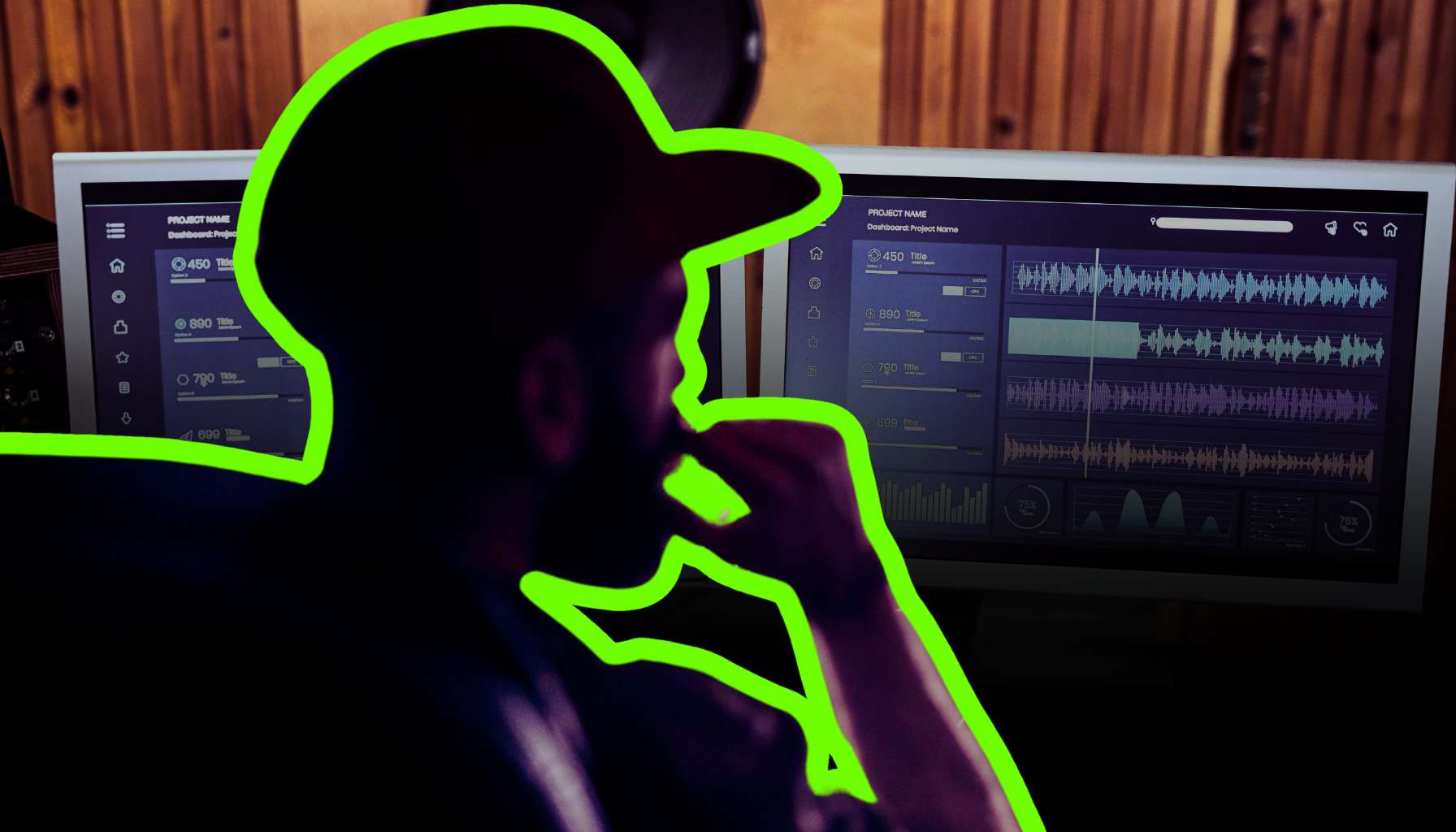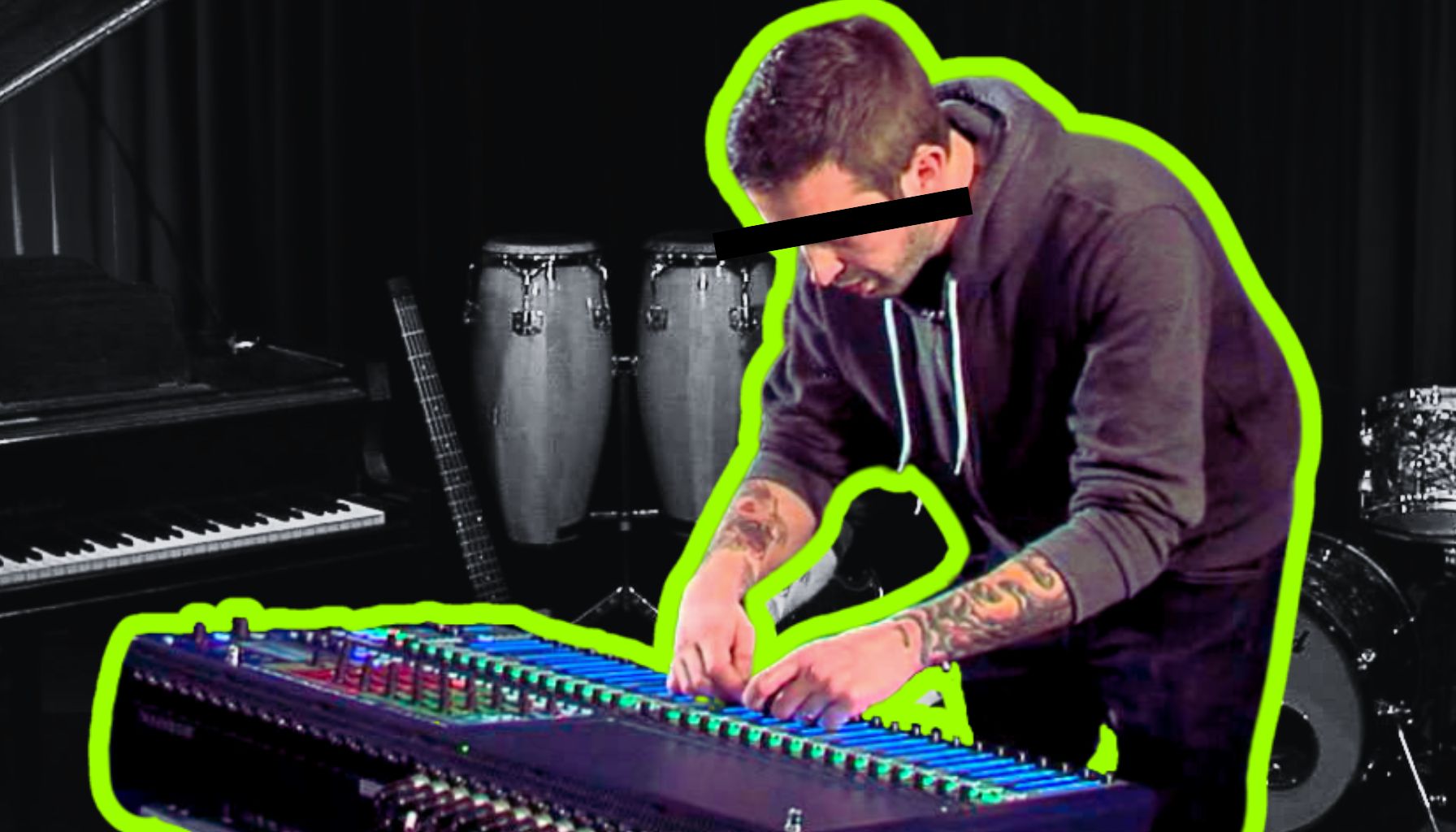Introduction
The Unique Challenges of Musical Theatre Production
Transcending from the whispered tales of a writer’s nook to the razzmatazz of the stage, the creation of a musical theater production is quite the tightrope walk. It’s a blend of stirring narratives, soaring melodies, and an alchemy that transforms ink and sound into spectacle and emotion. Grab your top hats and tap shoes, folks; we’re about to peel back the curtain on the unique world of producing for musical theater.
Overview of Musical Theatre as an Art Form
Musical theater is a genre that doesn’t shy away from the limelight. Its DNA is a double helix of drama and melody; it’s an art form where character arcs and piano arcs marry. The stories told are as varied as the keys on a piano – from the heartbreak of “Les Misérables” to the hilarious escapades in “The Book of Mormon”. Each production is a universe, bound only by the limits of imagination.
The Producer’s Role in Bringing a Show to Life
The role of a producer in musical theater is akin to that of a master chef. Whether you’re simmering a small off-Broadway stew or boiling a big-budget Broadway broth, the ingredients must simmer together perfectly. With a pinch of tenacity and a dollop of vision, producers are the ones tasked with whisking together the creative elements to cook up a storm.
The Production Team: Roles and Collaborations
No production can rise from the grand piano of dreams without a team as harmonized as a sophisticated jazz ensemble. Assembling this crew is the first step in transforming the ethereal into the tangible.
Assembling Your Creative Team: Directors, Choreographers, and Designers
From the director with their eye for storytelling to the choreographer, whose steps give life to lyrics, each play a central role. Don’t forget set and costume designers – artists who splash the canvas of our imagination onto the stage. Their collaboration doesn’t just bring out the best in the show; it makes the show.
The Central Role of the Musical Director and Composers
And then, there’s the musical director – a sultan of sound, a wizard with the wand, steering the orchestral ship while zooming in on those high G’s and low B’s. In cahoots with them are the composers and lyricists, who ensure that every note and every word carry the weight of the story, weaving the emotional tapestry of the musical.
As we spotlight the early symphony of ideas and collaborative sparks, we set the stage for the next act—the pre-production and planning phase. Stay in tune as we venture into the genesis of a musical.
Here awaits the journey from a whimsical idea that tap-dances across one’s imagination to the meticulous drafting of scripts, and the birthing of tunes that’ll soon be hummed in showers worldwide. Prepare to delve deep into the strategic composition of song, lyric, and narrative that forms the spine of any musical theater odyssey.
Pre-Production and Planning Stage
Before the standing ovations and the roar of the crowds, there’s the critical phase often hidden from the limelight—the pre-production and planning stage in musical theater. It’s where the glimmer of an idea morphs into a script that’s ready to slip into the spotlight and where composers become the architects of emotion, setting the stage for a symphony of visuals, sounds, and stories.
Conceptualizing the Musical
Just as you wouldn’t build a set without a blueprint, you can’t produce a show without a solid foundation. The journey from eureka moment to script is akin to catching a lightning bolt in a bottle—it’s electric, sometimes erratic, but always exhilarating.
Workshopping the fledgling script with actors and getting real-time responses gives you a taste of audience reaction, while the music and lyrics begin to weave their narrative intrigue and emotional resonance.
Composing a musical score involves more than humming a tune; it’s about carving out melodies and harmonies that underscore every sentiment and sync with every pivot in the plot. Whether it’s the thunderous beats during a hero’s ascent or the lilting melody of a love ballad, the pre-production phase is where music is scripted to stir souls, all while ensuring it weaves seamlessly throughout the narrative.
Budgeting and Scheduling
Tackling the financial tapestry of a musical theater production is a feat that would have even the most seasoned Wall Street tycoons breaking into a cold sweat. Budgeting requires the precision of an orchestra conductor and the foresight of a psychic—paring costs without compromising artistic vision, securing investments, and stretching dollars until they sing. Then comes the scheduling, a task with more moving parts than a choreographed dance number.
Crafting a timeline from workshopping to previews and finally to opening night, while navigating venue bookings and coordinating cast and crew availability, is a high-wire act performed without a net. This prelude to the main act – dotted with critical decisions, financial forays, and creative churnings – sets the scene for the next act that breathes life into a production: casting and rehearsals.
With foundation stones in place, producers and directors prepare to delve into the world of auditions, finding talents that harmonize with the musical as perfectly as lyrics match a melody. It’s a pivotal moment that shapes the heart and soul that will eventually beat on the stage – every performer a vital note in the compelling score of the production, ready to be harmonized in rigorously planned rehearsals.
Casting and Rehearsals
Every musical theater producer knows that once the stage is set conceptually, the spotlight pivots to the real stars of the show: the cast. Casting for musical theater is less about filling roles and more like conducting a symphony of personalities. It’s about harmonizing raw talent with polished skills and blending the seasoned veterans with the energetic neophytes to cook up a performance that’s both flavorful and fresh.
Finding the Right Cast for the Production
The crux of sculpting the soul of the musical lies in the delicate art of casting. It’s an intricate ballet that extends beyond vocal prowess and acting chops. Here, we delve into auditioning performers with a keen eye for that spark—that inexplicable energy that fills the theater with magic.
When casting, one must also gauge the chemistry between actors; after a duet between potential leads sparks more effect than an ill-timed pyrotechnic, you’ll know you’ve struck gold. Crafting an ensemble where each member’s strength is the other’s support is like finding the right key to a complex melody—it’s pivotal, and when done right, powerful.
Rehearsals and Workshops
With the cast in the wings, the musical theater producer must then shepherd the performers through rehearsals and workshops, blending synchronization with spontaneity. Structuring rehearsals for efficiency means balancing rigorous ballet sessions with the vulnerability of emotion during book scenes. Plus, there is the crescendo of orchestrations and vocal arrangements; only when these are fine-tuned can the musical’s heartbeat echo through every line, note, and step.
Rehearsal is also where the musical elements are woven into the tapestry of staging; orchestrations swell with movements, and vocal harmonies merge with understated glances. It’s a multifaceted chess game, ensuring that the rook and knight move in concert to bring checkmate upon opening night.
As we transition away from the echoes of rehearsal pianos and the clicking of tap shoes, we sharpen our focus on the technical intricacies of production. The musical is now a living, throbbing entity, and it’s time to dress it up in its visual and aural finery.
From the whimsy of set design to the finesse of lighting cues, and the balancing act between the orchestra pit’s hum and an actor’s belt – these nuances are the bedrock of an immersive experience, binding audience to performer in the intimate space of a shared story.
Threaded between the lines of our actors’ script and dancing along the costume hems is the next step in our journey: the Technical Aspects of Production. In these depths, we conjure the alchemy of sight and sound, beckoning forth the spirit of the stage in all its grandeur. Let’s lift the curtain on this behind-the-scenes sorcery, where every cue is a choreographed whisper and every scene change is an unnoticed ballet.
The Technical Aspects of Production
With the cast firm in their roles and the rhythms and melodies of the show coursing through their veins, it’s time to dress the stage with the magic of technical wizardry. Creating the wondrous sights and sounds that will captivate our audience is no small feat—it’s where the rubber of our production meets the proverbial road of the stage.
Set, Costume, and Lighting Design
The visual feast of a musical theater production is not unlike painting a masterpiece; except, it’s a dynamic canvas that’s live, with moving set pieces and actors as the brushes. Set and costume designers are the unsung Picassos, creating worlds that are both visually cohesive and narratively compelling.
And when the spotlight flicks on, it’s the lighting designer’s cue to add depth and drama, ensuring the actors are seen not just with the eyes but felt with the heart.
From the twinkle of a fairy’s wand to the haunting shadows of a villain’s lair, each technical cue and light adjustment is meticulously orchestrated to complement the musical numbers. Imagine trying to synchronize a waltz with a disco—lighting cues are the rhythm to which the stage dances.
Sound Design and Reinforcement
Should we liken a musical to a painting, then sound design is the frame that holds it all together. Crafting a soundscape that ebbs and flows with the narrative yet remains as subtle as a whispering breeze is the high art of sound engineering. The acoustic alchemy of blending live orchestra with vocalists ensures that every poignant line soars above the swell of strings and every tender ballad nestles gently on the ears.
It’s a delicate balancing act, made more challenging by the unpredictability of live performance. Too much amplification, and you risk the clangor of a high school battle of the bands; too little, and you have the murmur of an under caffeinated poetry reading. The sweet spot is somewhere in between—it’s about clarity, consistency, and conveying the emotional undertones of every note.
As we untangle the intricate web of set changes and sound levels, we peek behind the curtain at the role modern technology plays in pulling it all together. From the hum of the dimmers to the whisper of wireless mics, the next phase of our journey examines how technology is not just enhancing performances, but reshaping the very fabric of what it means to produce theater in the digital age.
So, slip on your tech-savvy gloves—we’re about to get hands-on with the gadgets and gizmos that are revolutionizing the stage, in a crossover episode where Shakespeare meets Silicon Valley.
The Role of Technology in Modern Productions
Sashaying from the gritty sawdust of the stage to the gleaming screens of high-tech gadgetry, we arrive at a pivotal act in our production: the marriage of musical theater with modern technology. In this era of digital dazzle, the spotlight turns to multimedia mastery and the sonic sorcery of software and equipment that amplifies the theatrics of storytelling.
Enhancing Performance with Multimedia
Let’s face it, traditional backdrops are as passé as a silent film in a VR cinema. In today’s theater, projected backdrops and digital effects are the chorus members that never miss a cue. They bring the sizzle to Shakespeare, the wonder to Webber, transforming static scenes into dynamic dreams. Whether it’s a starlit sky or a bustling cityscape, these visuals are not just backgrounds; they are silent narrators enhancing the tale being spun on the stage.
Projected Backdrops and Digital Effects
Consider the projected backdrop, not your grandma’s pull-down screen, but a vast canvas where art meets imagination, catapulting audiences from the cobblestone streets of Dickensian London to the verdant hills of the Von Trapp family with just the flick of a switch.
Harnessing Technology for Interactive Sets
Then there’s the art of interactive sets—imagine a staircase that lights up with each dramatic step or a mirror that morphs into a portal. This isn’t just set design; it’s wizardry, where the environment responds to the actors’ touch like a loyal stage partner, creating a visceral, ‘you-just-had-to-be-there’ experience.
Using Software and Equipment for Sound Production
If multimedia is the sizzle, then software and equipment are the steak—substance, baby! The orchestral swell of a ballad or the foot-tapping syncopation of a showstopper is now deftly engineered with a sequencing and sampling finesse that Mozart would envy (if he had a laptop).
Sequencing and Sampling in Musical Theatre
No more are we confined to the acoustic limits of an orchestra pit; with sequencing software, we can infuse sounds that span from the baroque to the breathtakingly futuristic. Cue the John Williams-esque brass or the angelic chimes; with sampling, it’s all just a click away.
Wireless Solutions for Performer Mobility
Moreover, gone are the days of tripping over microphone cords—today’s performers are as wireless as your latest smartphone. Wireless tech ensures that the only thing the cast will be caught up in is the drama (and not wayward cables).
As the final note of this section resonates in the digital ether, we’re queued for the transition to the next stage, the post-production process where the ephemeral magic of live performance is captured, bottled, and ready to be shipped out to the world—or at least to anyone with a good enough internet connection.odie, it’s all just a click away.
But let’s not get ahead of ourselves—we’ve got an act to finish before the curtain call. With technology firmly rooted in our production playbook, let’s gear up to give these tracks the cast album treatment they deserve. From capturing the ‘live’ essence in the sterile vacuum of a recording booth to navigating the churning seas of music distribution and promotion, we’ve got our work cut out for us.
So dust off your mixing desks and warm up those vocal cords; we’re about to make musical history—or at least a cast album that hits the right notes.
The Post-Production Process
With the final bow taken and the curtain closed on a successful live run, producing for musical theater doesn’t tap dance into the sunset just yet. No, post-production is the encore that many don’t see but everyone feels. From preserving the show’s magic in a cast album to ensuring its legacy through archiving, let’s grab the top hat and explore this final act.
Recording the Cast Album
The cast album is the soul of the show pressed into vinyl, CD, or nestled within the 1s and 0s of a streaming service — essentially, it’s how Aunt Edna who couldn’t make the show gets to sob into her handkerchief from her living room. Capturing the magic of live performances demands studio techniques that serve up the ‘being there’ experience on a platter, using a dash of reverb here, a sprinkle of mixing there, so that the listener practically feels the spotlight.
Capturing the Magic: Studio Techniques for a Live Feel
Ah, the studio, where the air is thick with potential and slight anxiety. To translate the stage to stereo, you’ll want to embrace techniques that embody the theatrical experience. Think of the studio as a canvas, where the right microphone techniques and ambient acoustics paint the performance in crystal-clear fidelity.
Distribution and Promotion of the Cast Recording
Once the final note is tweaked and the last track mastered, the magical mystery tour of distribution begins. Much like casting breadcrumbs into the world to bring the birds, promoting the cast recording is about finding the right platforms where your potential listeners roost, ready to chirp about your show’s tunes to anyone who’ll listen.
Archiving the Production
Music fades, sets get struck, but memories? They’re the stars that refuse to stop twinkling. Archiving the production is about capturing those stars in a jar for future generations. Whether it’s photos that freeze a pirouette mid-spin or video recordings that echo laughter long after the show is done, this is your shot at immortality, folks.
Importance of Documentation for Future Revivals
Whether a future director is looking to resurrect your show or a nostalgic cast member wants to revisit their past glories, having a detailed archive is like a theater geek’s pot of gold. It must be comprehensive, clear, and hold the kind of details that would make even the most avid fan sigh with satisfaction.
Video Recording and Editing for Marketing and Archives
And what of video recording, you ask? Cut, splice, slow-mo – an art form in itself, strategically edited for marketing that entices and archives that speak of your show’s panache. It’s here that the past meets the future and where your production can cement itself as a piece of musical theater history.
Just as the rhythm of a production has its cadence, so too does this foray into post-production. Let it not be said that a show’s life ends with its run. No, through recording albums and diligent archiving, the beat goes on.
Now, as we stand in the wings ready to address your FAQs, like a stage manager poised to cue the finale, rest assured that the journey of producing for musical theater is a multifaceted adventure that continues to echo long after the last note has been played.
FAQs on Producing for Musical Theatre: A Multifaceted Approach
After the final curtain falls and the audience’s applause fades, a producer might find themselves amidst a sea of questions, concerns, and the quest for encore-worthy success. Herein lies the answers to frequently asked questions that every aspiring Sondheim or Miranda may ponder on their journey through the mesmerizing world of musical theater production.
What is the First Step in Producing for Musical Theatre?
Like every grand opening number that sets the tone for the show, the first step in producing is conceptualization. Lay the groundwork for your spectacle with a compelling story and a score that’ll leave the audience humming long after they’ve left their seats. It all begins with a vision — whether it’s a spark of inspiration drawn from a classic tale or an entirely original narrative that’s been nudging you at the edges of your dreams.
How Do You Ensure That the Essence of the Musical is Conveyed in Every Aspect of Production?
The essence of a musical, like the best showbiz secrets, is multifaceted. It requires a keen eye, ensuring that scripts, lyrics, music, and choreography aren’t just individual diamonds but part of a dazzling, cohesive crown. Each department should sing the same tune, metaphorically speaking, to resonate the core theme and emotions with pitch-perfect harmony.
What Are Some Common Obstacles in Musical Theatre Production and How Can They Be Overcome?
The path of production is seldom obstacle-free. From unexpected budget overages to creative differences, these hurdles can be as tricky as a tap dance on a tightrope. Yet, with thorough planning, open communication, and a touch of theatrical magic, each challenge can be transformed into a standing ovation-worthy triumph.
How Important Is It for the Producer to Be Involved with the Casting Process?
Producers are the impresarios that bring the world of the show to life, and casting is the cornerstone of this creation. Involvement in selecting the troupe is imperative; each cast member must not only fit the role but also embody the spirit of the production. It’s about finding the right actor who doesn’t just walk the walk but can also talk the talk — or sing it, for that matter.
Can You Make a Successful Musical Theatre Production on a Tight Budget?
In the world of musical theater, creativity doesn’t have to come at a high cost. A tight budget is simply an invitation for innovation. Optimize existing resources, get creative with sets and costumes, and never underestimate the power of raw, passionate talent. Who said you need Broadway buckaroos to make a production sparkle like the Great White Way?
How Much Technological Integration is Considered Too Much in a Traditional Musical?
Ah, technology — the double-edged sword that can make or break a production’s antiquity. The golden rule? Use technology to enhance, not overshadow. A hologram might bring your ghostly character to life in more ways than one, but it’s the human touch that forges that visceral connection with the audience.
What Strategies Exist for Effectively Marketing a Musical Theatre Production?
Marketing a musical is like directing the spotlight — it’s all about getting your show seen. Harness the zeitgeist through social media, create buzz with tantalizing sneak peeks, and remember the age-old allure of word-of-mouth. Make your marketing as memorable as the production itself, and your theater will be the one with lines around the block.
How Do Producers Manage the Balance Between Artistic Vision and Commercial Appeal?
The tightrope walk between artistic expression and commercial allure is a performance in itself. While ticket sales are important, they should never come at the expense of artistic integrity. Strive for a production that captivates hearts while also filling seats, ensuring that your show’s run is both critically acclaimed and commercially successful.
What Are Some Tips for Producers to Keep a Musical Theatre Production Running Smoothly?
Organization, communication, and a pinch of dramatic flair are the ingredients for a smooth production. Keep the lines of communication open between all departments, manage the logistical aspects with militaristic precision, and sprinkle everything with a dusting of showbiz charm.
How Do You Measure the Success of a Musical Theatre Production?
Success in musical theater isn’t just a matter of numbers; it’s the standing ovations, the teary-eyed patrons, and the moment when the audience holds their breath in unison.
Whether through critical acclaim, longevity, or the sheer impact it has on those who experience it, success is measured in the immeasurable: the transformative power of a story well told. With the FAQs addressed, your role as a musical theater producer has been illuminated under the spotlight — an amalgamation of creator, negotiator, and tastemaker.
May the answers help guide you towards not just a smash hit but an enduring legacy in the footlights. Now, break a leg as you turn the page to the next act in your production journey!















